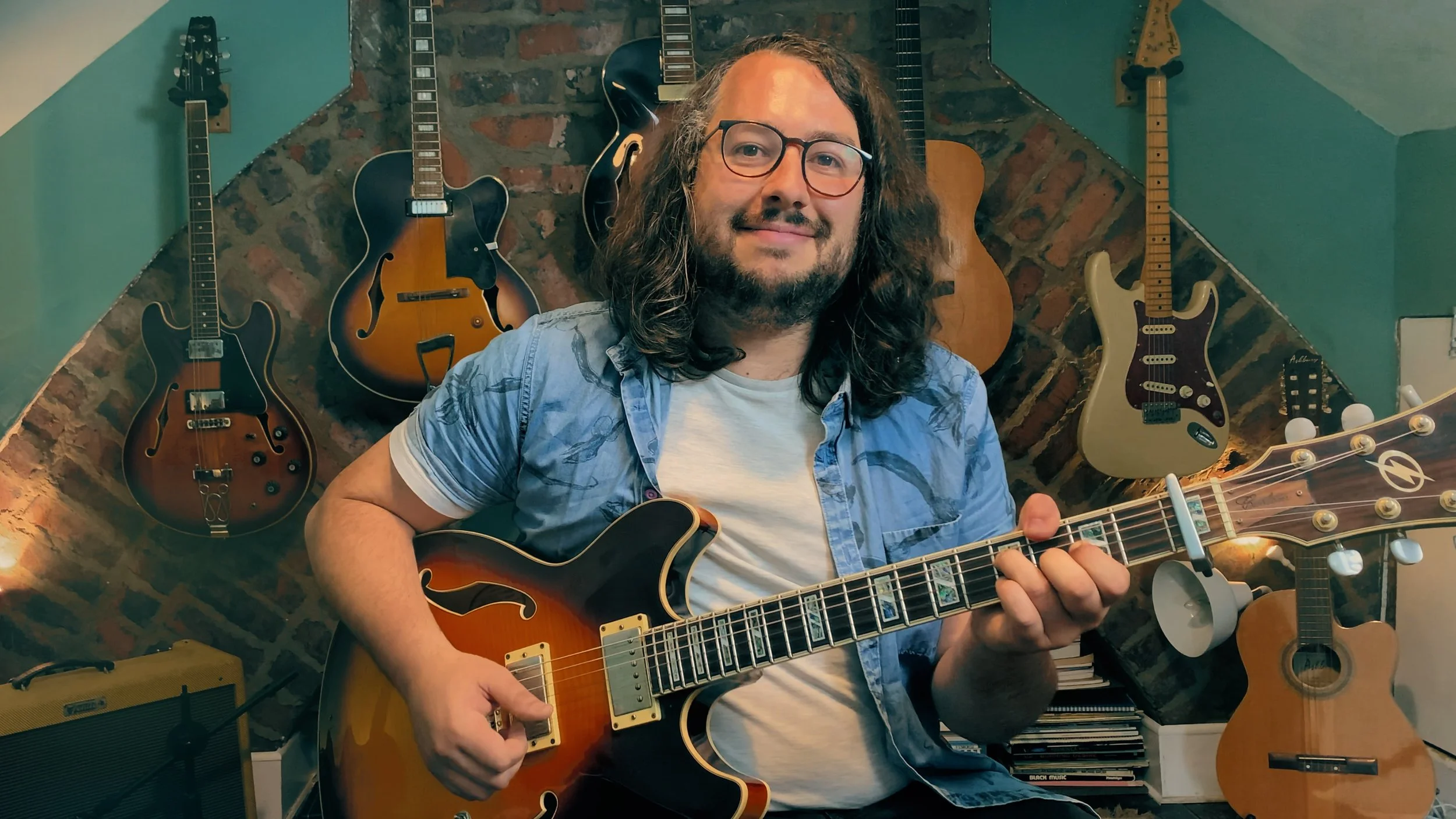Learning the notes on your guitar is essential if you want to progress as a guitarist—or as a musician in general. Many guitarists start by learning through tablature, using numbers to guide finger placement. While this is a helpful starting point, relying solely on tabs can hold you back when playing with other musicians or learning songs written in standard notation.
STEP 1 - UNDERSTAND WHAT A NOTE IS
This might seem obvious, but many guitarists confuse terms like “minor” and “major” with a note. A note is simply a single letter—A through G—that may have a sharp (#) or flat (♭) next to it (we’ll cover this in more detail in the following steps). Each letter represents a specific pitch, which corresponds to a fret on your guitar. The frets are the spaces between the metal bars on the neck, and pressing a string down at a fret changes the pitch, creating the note you want.
STEP 2 - LEARN THE NAMES OF THE NOTES
There are 12 notes on your guitar. They are:
A, A# or B♭, B, C, C# or D♭, D, D# or E♭, E, F, F# or G♭, G, G# or A♭
The # stands for SHARP
The ♭ stands for FLAT
Sometimes seeing this sequence on a piano can help you to visualise how this works out.
Practice saying the sequence out loud and then write all 12 notes out by memory 5 times.
STEP 3 - Play this SEQUENCE while saying the note names ON THE E and A STRINGS
There is something about saying these notes out loud that helps get the sequence into your head.
Starting on the A strings:
the open string is A, First FRET is A# or B♭, second fret is B, third fret is C and so on…
Then jump to the E string: the open string is E, the 1st fret is F, the 2nd fret is F# (or G♭), the 3rd fret is G, and so on.
Memorise the 3rd, 5th & 7th Frets on the E and A Strings
Next, we need to speed up the time it takes to figure out where a note is on the guitar. The first step is to memorise the 3rd, 5th, and 7th fret names on the E and A strings.
Say them out loud, write them down, play the frets—whatever it takes to get them firmly in your head!
On the E string -
And then on the A String, do the same thing -
Memorising these six notes will speed up your navigation of the fretboard. For example, if you want to play a C#, you can first locate the C (3rd fret on the A string) and then move up one fret. Similarly, if you need an A#, start at the A (5th fret on the E string) and move up one fret.
Try some random note challenges and see how quickly you can find them on these two strings.
FINALLY, ONCE YOU HAVE DONE ALL THAT, LEARN THIS SEQUENCE
The next sequence will help you find all the notes of the same name across the entire guitar.
First, try it in the key of G, moving up and down the guitar:
Once you have this memorised, try it in every key—again, back and forth. Here it is in the key of A:
Hopefully this is all making sense, and you are starting to navigate around the fretboard knowing the notes you are playing.
NOW TEST YOURSELF WITH RANDOM NOTES
The best way to get super quick at this is to tie together the two main things you’ve learned. First, whenever you want to find a note, relate everything back to the E or A string.
For instance, if you are trying to figure out a note on the B string, use the sequence you just learned to navigate back up to the E string.
As an example, if you were trying to figure out what the notes are on the 6th and 8th frets of the B string, this is how you would do it…
This will also work when trying to figure out notes on the G string. For instance if you are trying to find the 6th and 8th frets on the G String, this is how you would do it…
By now, you should—maybe without even realising it—be able to locate and identify any note on the fretboard.
Practice and get quick!
That’s basically it! That is the secret. Now, you just need to put it into practice and build speed.
Good luck, and don’t forget to share this article if it’s helped you!
Get all the TABS for FREE!
Click here to join my free members area and download all the TABS—keep learning and playing along!



